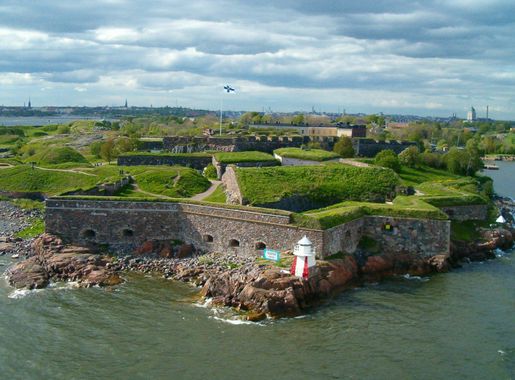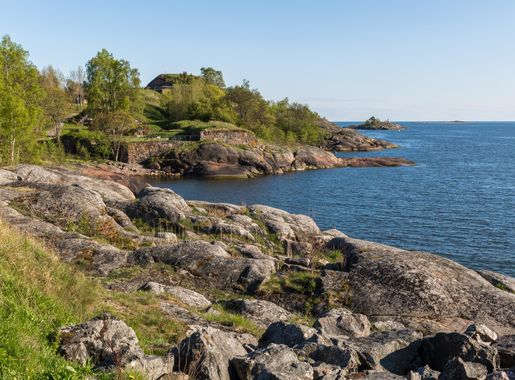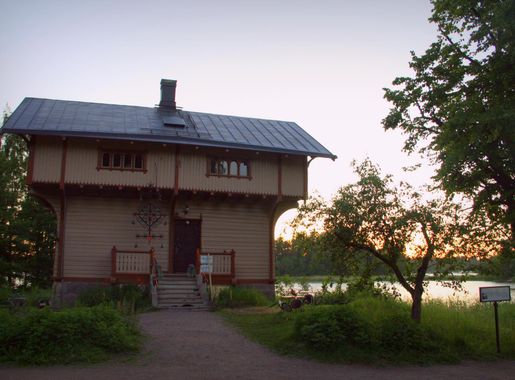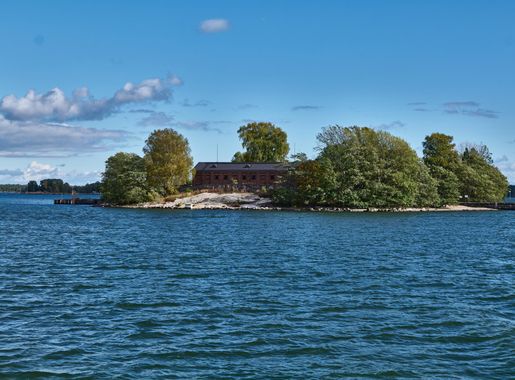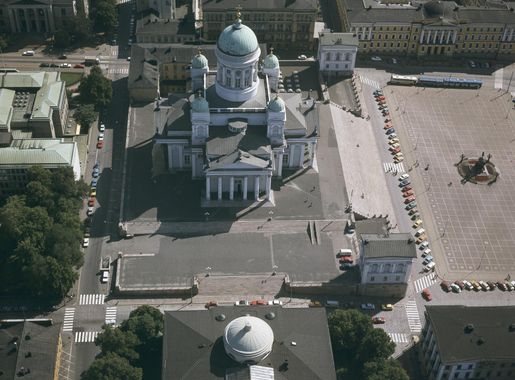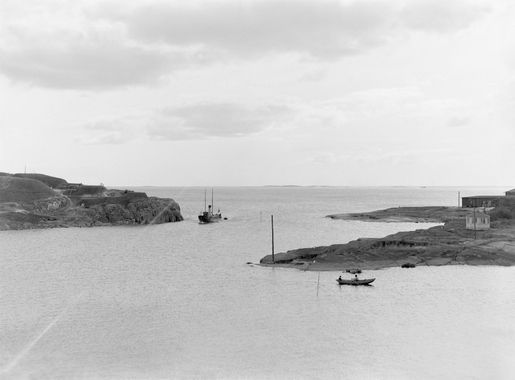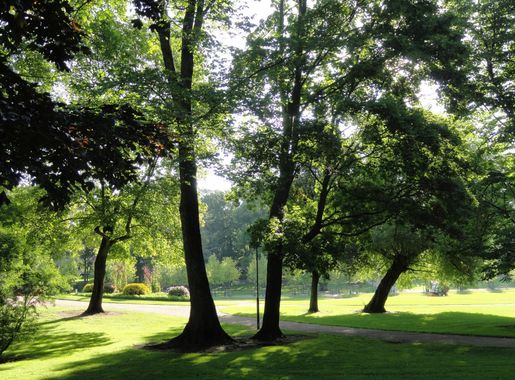
Enchanting Isles: The Helsinki Archipelago
Discover the serene beauty of the Helsinki Archipelago, a stunning cluster of over 300 islands offering nature, history, and adventure just a boat ride from Finland's capital.
The Helsinki Archipelago, a string of over 300 islands, offers a unique blend of natural beauty and cultural richness. Just a short boat ride from Finland's bustling capital, these islands provide a serene escape into nature's embrace. Whether you're looking to hike through lush forests, relax on pristine beaches, or explore historic fortresses, the archipelago has something for everyone. One of the most popular islands is Suomenlinna, a UNESCO World Heritage site. This sea fortress, built in the 18th century, spans several islands and is a fascinating place to explore. With its museums, cafes, and stunning views, Suomenlinna is a perfect day trip destination. For those seeking outdoor activities, the Helsinki Archipelago does not disappoint. Kayaking, sailing, and fishing are just a few of the water-based activities you can enjoy. Many islands also have well-marked hiking trails that offer breathtaking views of the surrounding sea and landscapes. The archipelago is also a haven for wildlife enthusiasts. Birdwatchers can spot a variety of species, especially during the migration seasons. In the summer, the islands come alive with wildflowers, making it an ideal time for nature walks and photography. Visiting the Helsinki Archipelago offers a unique opportunity to experience the natural and cultural heritage of Finland. With its easy accessibility from Helsinki, it is a must-visit for anyone wanting to explore the beauty of Finland's coastal landscapes.
Local tips in Helsinki Archipelago
- Visit Suomenlinna early to avoid the crowds and get the best photos.
- Pack a picnic; many islands have designated picnic areas with beautiful views.
- Check the ferry schedules in advance, especially during the off-season.
- Bring binoculars for birdwatching, especially during migration seasons.
- Wear comfortable shoes for hiking and exploring the islands.
- Consider renting a kayak or a small boat for a more intimate exploration of the islands.
Enchanting Isles: The Helsinki Archipelago
The Helsinki Archipelago, a string of over 300 islands, offers a unique blend of natural beauty and cultural richness. Just a short boat ride from Finland's bustling capital, these islands provide a serene escape into nature's embrace. Whether you're looking to hike through lush forests, relax on pristine beaches, or explore historic fortresses, the archipelago has something for everyone. One of the most popular islands is Suomenlinna, a UNESCO World Heritage site. This sea fortress, built in the 18th century, spans several islands and is a fascinating place to explore. With its museums, cafes, and stunning views, Suomenlinna is a perfect day trip destination. For those seeking outdoor activities, the Helsinki Archipelago does not disappoint. Kayaking, sailing, and fishing are just a few of the water-based activities you can enjoy. Many islands also have well-marked hiking trails that offer breathtaking views of the surrounding sea and landscapes. The archipelago is also a haven for wildlife enthusiasts. Birdwatchers can spot a variety of species, especially during the migration seasons. In the summer, the islands come alive with wildflowers, making it an ideal time for nature walks and photography. Visiting the Helsinki Archipelago offers a unique opportunity to experience the natural and cultural heritage of Finland. With its easy accessibility from Helsinki, it is a must-visit for anyone wanting to explore the beauty of Finland's coastal landscapes.
When is the best time to go to Helsinki Archipelago?
Iconic landmarks you can’t miss
Linnanmäki
Experience the thrills of Linnanmäki, Helsinki's premier amusement park, with rides, entertainment, and delicious food guaranteed to delight every visitor.
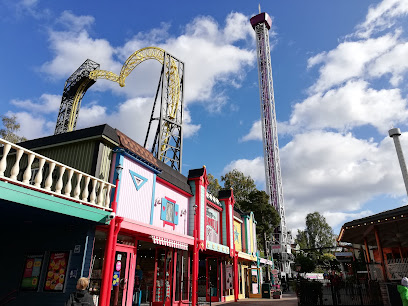
Helsinki Market Square
Discover the heart of Helsinki at the bustling Market Square, where local flavors, crafts, and stunning waterfront views come together.
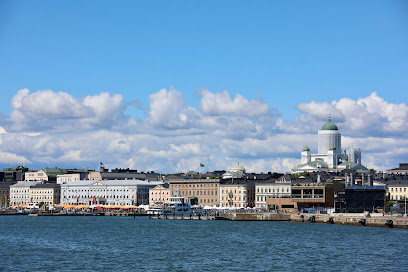
Suomenlinna
Explore Suomenlinna, a UNESCO World Heritage site, where history meets stunning landscapes and vibrant culture, just a ferry ride from Helsinki.
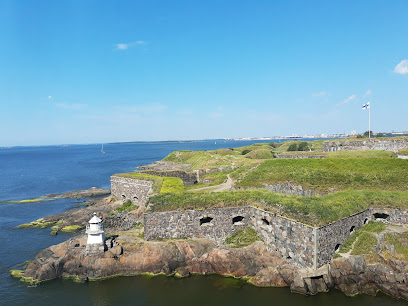
Senate Square
Explore the stunning architecture and vibrant atmosphere of Senate Square, a cultural gem in the heart of Helsinki, surrounded by historic landmarks.
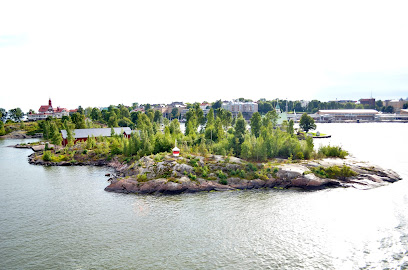
Temppeliaukio Church
Discover the breathtaking Temppeliaukio Church, an architectural masterpiece carved from rock, offering stunning acoustics and a serene atmosphere in Helsinki.
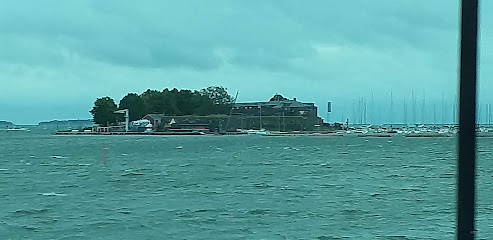
Esplanadi
Explore Esplanadi, Helsinki's iconic park, where culture, nature, and vibrant city life come together in a stunning urban oasis.
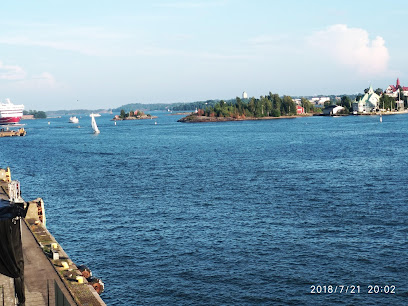
Helsinki Cathedral
Discover the architectural splendor and rich history of Helsinki Cathedral, a must-visit landmark in Finland's capital, embodying Finnish heritage and culture.
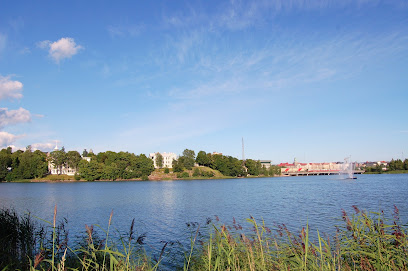
Kaivopuisto
Experience the tranquil beauty of Kaivopuisto, Helsinki's premier park, where lush landscapes meet stunning sea views in a vibrant urban oasis.
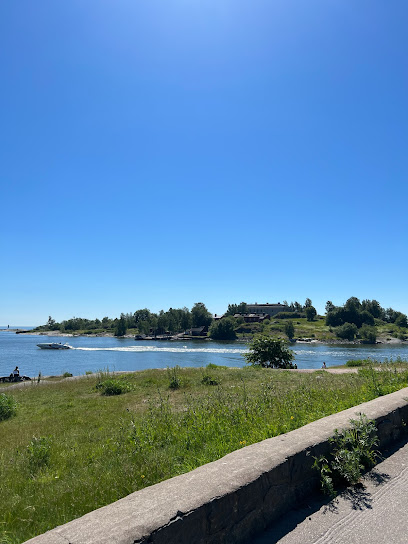
SEA LIFE Helsinki
Immerse yourself in the enchanting world of marine life at SEA LIFE Helsinki, where family-friendly adventures and ocean conservation come together.
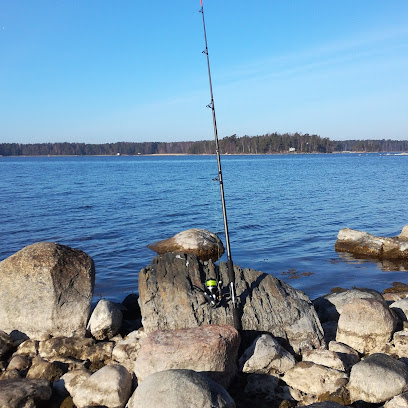
Sibelius Monument
Discover the Sibelius Monument in Helsinki, a stunning tribute to Finland's iconic composer Jean Sibelius, surrounded by beautiful park scenery.

Sibelius Park
Discover the serene beauty of Sibelius Park in Helsinki, dedicated to the legendary composer Jean Sibelius, where nature and culture harmonize.
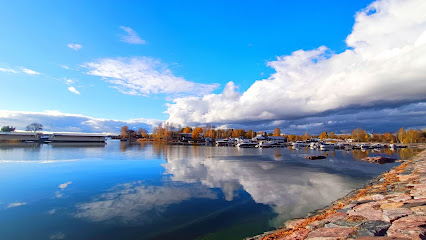
Kaisaniemi Park
Experience the tranquility of Kaisaniemi Park, a lush green escape in Helsinki featuring beautiful flora, a botanic garden, and serene picnic spots.
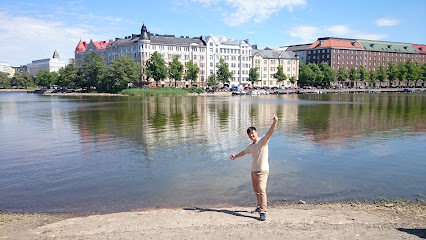
SkyWheel Helsinki
Experience breathtaking views of Helsinki from the iconic SkyWheel, where adventure meets stunning scenery in the heart of Finland.
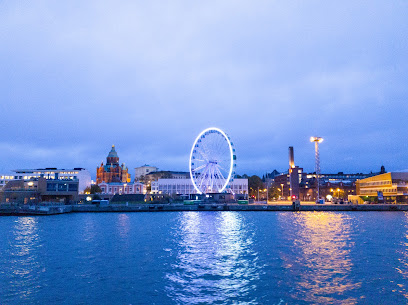
Kamppi Chapel
Discover the tranquil ambiance of Kamppi Chapel, a modern architectural masterpiece in Helsinki offering peace and reflection amidst urban life.
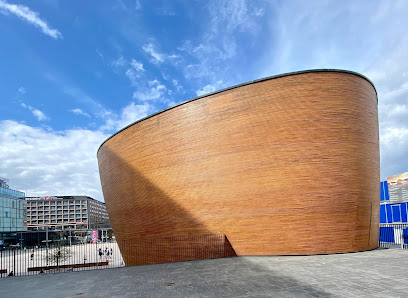
Haaga Rhododendron Park
Explore the serene beauty of Haaga Rhododendron Park, a botanical gem in Helsinki, perfect for nature lovers and peaceful escapes.
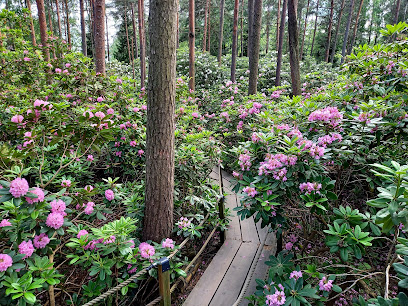
Unmissable attractions to see
Kamppi Helsinki
Experience the heart of Helsinki at Kamppi: a dynamic shopping center with diverse dining, beauty services, and cultural attractions.
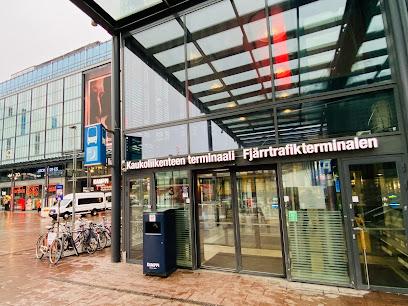
Academic Bookstore
Explore the Academic Bookstore in Helsinki, a cultural gem offering an extensive collection of literature, stationery, and unique gifts in a cozy atmosphere.
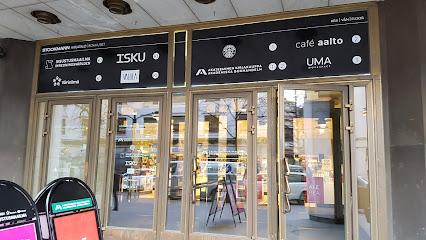
Vanhankaupunginkoski
Explore the serene landscapes and rich wildlife of Vanhankaupunginkoski, a hidden gem in Helsinki's natural paradise.

Helsinki Outlet
Explore Helsinki Outlet for unbeatable bargains on designer brands, delicious dining options, and a vibrant shopping atmosphere in Helsinki.
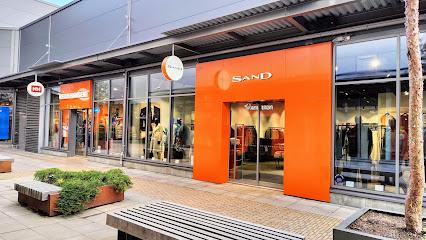
Sipoonkorpi National Park
Explore the stunning landscapes of Sipoonkorpi National Park, a serene escape featuring hiking trails, diverse wildlife, and breathtaking natural beauty in Sipoo.
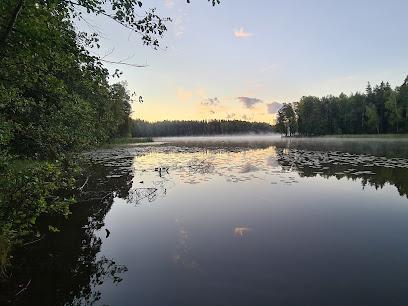
Tähtitorninvuori
Tähtitorninvuori: A tranquil park in Helsinki offering stunning views, rich history, and the perfect escape into nature.
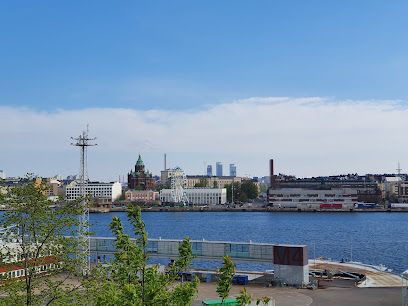
Hvitträsk
Explore Hvitträsk: A Stunning Architectural Marvel in the Heart of Finland's Nature, Showcasing Art and History.
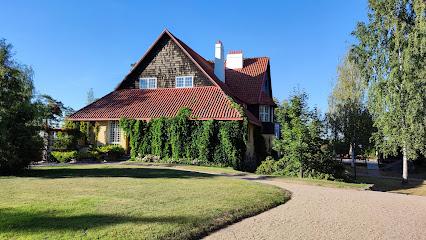
Hakasalmen huvila
Discover the beauty and culture of Finland at Hakasalmen Huvila, a historic villa and museum in the heart of Helsinki.
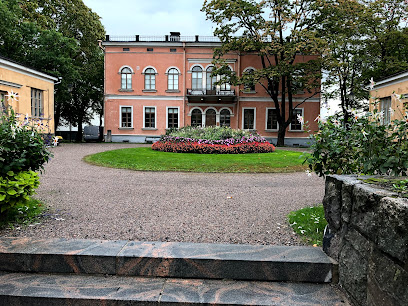
Svenska Teatern
Discover the magic of performing arts at Svenska Teatern, Helsinki's historic theater that brings culture to life with diverse performances and stunning architecture.
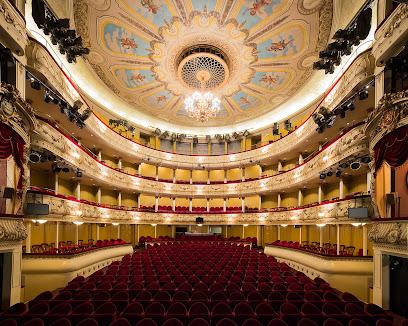
Three blacksmiths
Explore the iconic 'Three Blacksmiths' sculpture at Kolmensepänaukio in Helsinki, a must-see tourist attraction showcasing Finnish craftsmanship and artistry.
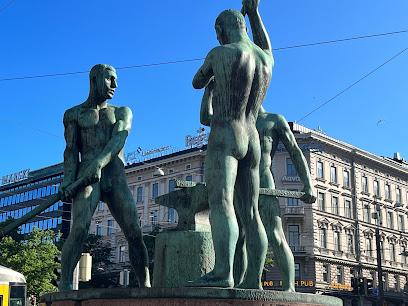
Suomenlinna Church
Explore the serene Suomenlinna Church on the historic island, a perfect blend of rich history and breathtaking maritime views.
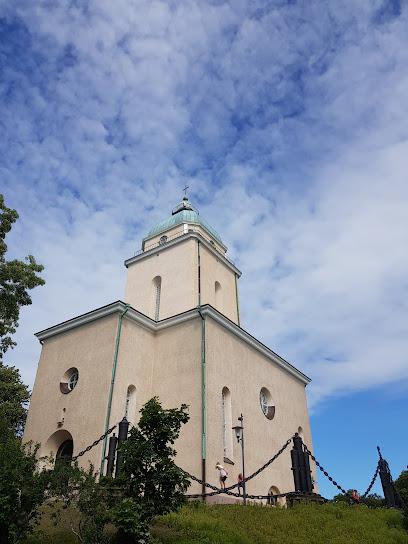
Alvar Aalto House
Explore Alvar Aalto House in Helsinki, a masterpiece of modern architecture showcasing the life and work of Finland's iconic architect.
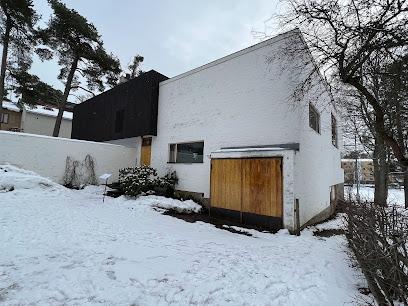
Lenin Park
Discover the lush tranquility of Lenin Park in Helsinki, a perfect blend of nature and history in the heart of the city.
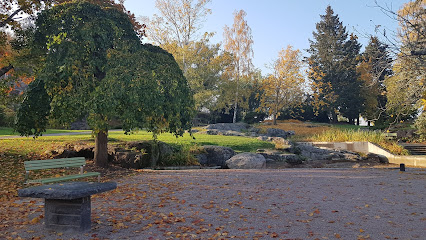
Vuoristorata
Unleash your inner thrill-seeker at Vuoristorata, Helsinki's legendary roller coaster in Linnanmäki Amusement Park, offering excitement and breathtaking views.
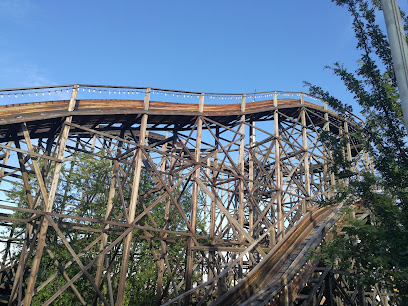
The Bank of Finland Museum
Explore Finland's monetary history at the Bank of Finland Museum, where currency comes alive through engaging exhibits and historical artifacts.
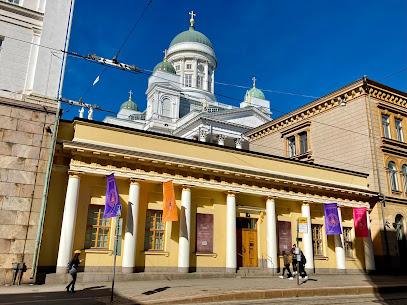
Essential places to dine
Lappi Ravintola
Savor authentic Finnish cuisine at Lappi Ravintola in Helsinki – where tradition meets taste in an inviting atmosphere.
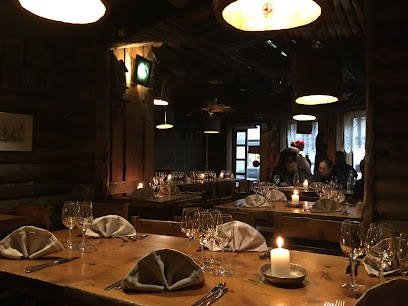
Ravintola Kannas
Discover authentic Finnish cuisine at Ravintola Kannas in Helsinki - where tradition meets taste in a cozy atmosphere.
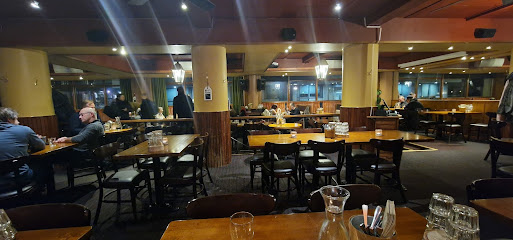
Restaurant Konstan Möljä
Experience authentic Finnish cuisine at Restaurant Konstan Möljä - where tradition meets taste in the heart of Helsinki.
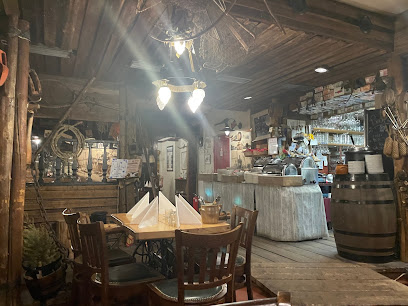
Ravintola Kolme Kruunua
Experience authentic Finnish cuisine at Ravintola Kolme Kruunua in Helsinki—where tradition meets modernity in every dish.
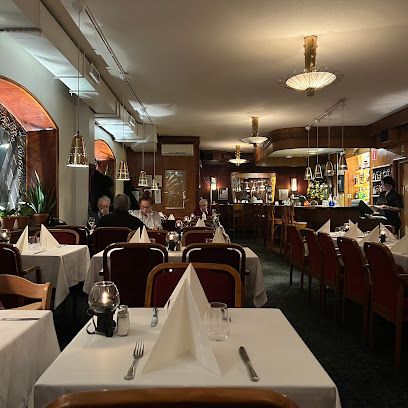
Restaurant Sea Horse
Savor traditional Finnish flavors at Restaurant Sea Horse in Helsinki – where every meal tells a story.
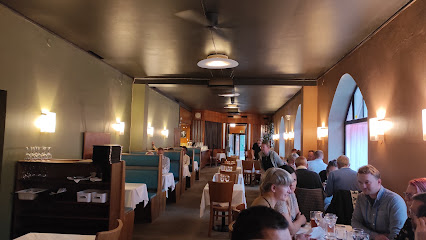
Restaurant Kuu
Discover exquisite Finnish cuisine at Restaurant Kuu in Helsinki – where tradition meets modern elegance.
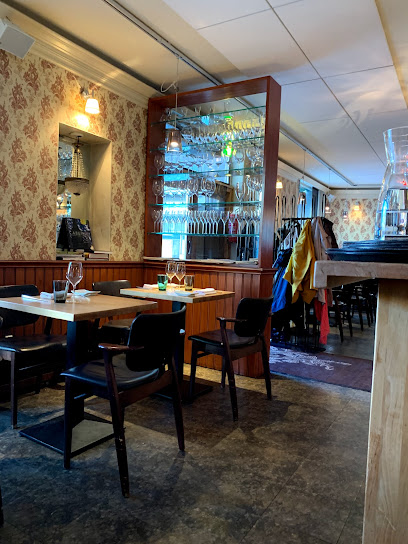
Restaurant Meripaviljonki
Experience exquisite seafood dining with breathtaking waterfront views at Restaurant Meripaviljonki in Helsinki.

Restaurant Merimakasiini
Experience authentic Finnish seafood at Restaurant Merimakasiini with stunning views and fresh local ingredients in the heart of Helsinki.
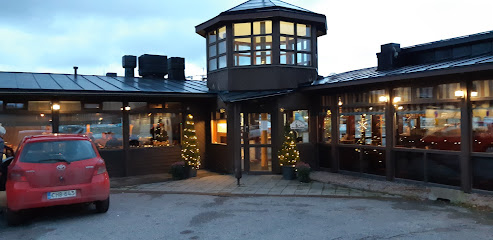
Ravintola KuuKuu
Discover authentic Finnish cuisine at Ravintola KuuKuu in Helsinki – where tradition meets modern dining in a cozy atmosphere.
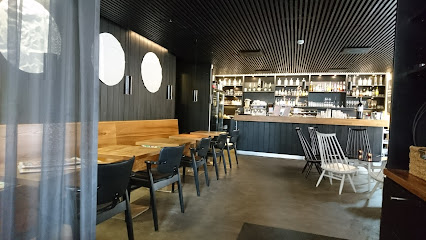
Ravintola Ragu
Experience the essence of Italy at Ravintola Ragu in Helsinki with exquisite dishes and an inviting atmosphere perfect for any occasion.
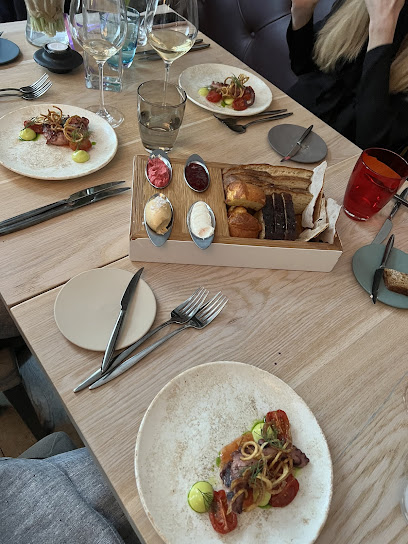
Ravintola Nokka
Experience authentic Finnish cuisine at Ravintola Nokka in Helsinki's stunning waterfront setting, blending tradition with modern culinary artistry.
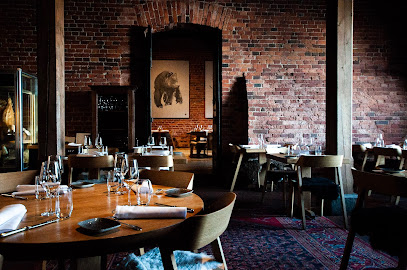
Restaurant Shelter
Experience exquisite Finnish cuisine at Restaurant Shelter in Helsinki, where stunning waterfront views meet culinary excellence.
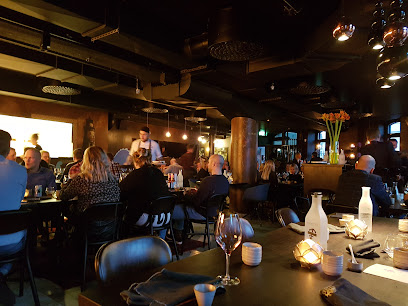
Baskeri & Basso
Discover the vibrant flavors of Finland at Baskeri & Basso - A must-visit culinary gem in Helsinki offering fresh ingredients and seasonal delights.
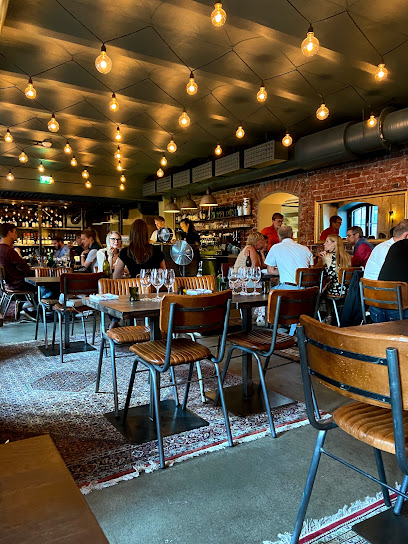
Savoy
Experience exquisite Finnish cuisine at Savoy, where breathtaking views meet culinary artistry in Helsinki's fine dining scene.
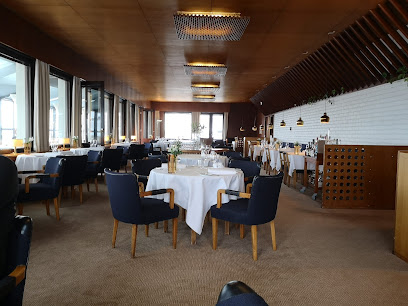
Finnjävel Salonki
Discover modern Finnish cuisine at Finnjävel Salonki – where tradition meets innovation in every exquisite dish.
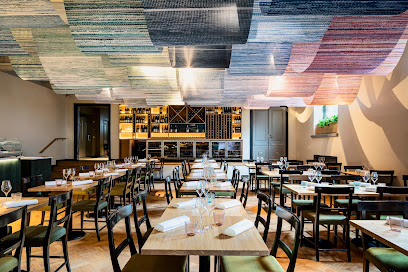
Markets, malls and hidden boutiques
Kamppi Helsinki
Experience the heart of Helsinki at Kamppi, your go-to destination for shopping, dining, and vibrant local culture.
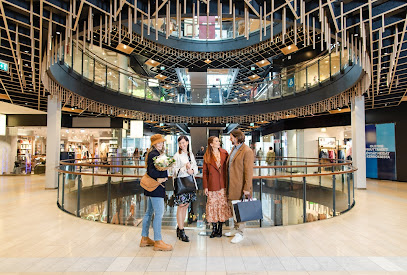
Forum
Discover the heart of Helsinki's shopping experience at Forum, where fashion, food, and fun come together in a vibrant setting.
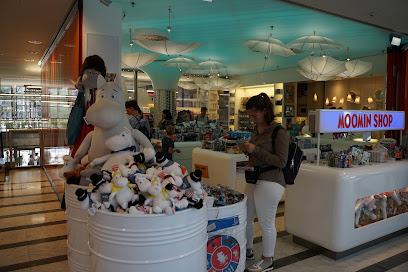
Mall of Tripla
Discover the vibrant Mall of Tripla, Helsinki's premier shopping destination featuring diverse brands, delightful dining, and entertainment for all ages.
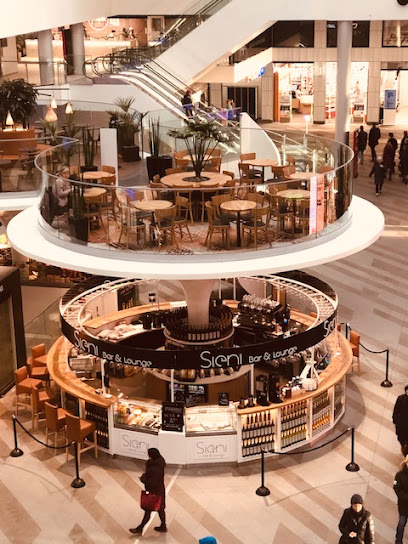
Sokos Department store, Helsinki
Experience the ultimate shopping destination in Helsinki at Sokos Department Store, featuring local and international brands in a vibrant atmosphere.

Kluuvi Shopping Centre
Experience the heart of Helsinki at Kluuvi Shopping Centre, where shopping, dining, and leisure come together in a vibrant atmosphere.
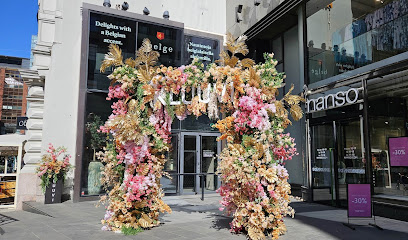
Helsinki Outlet
Discover unbeatable deals and a vast selection of brands at Helsinki Outlet, your ultimate shopping destination in Finland.
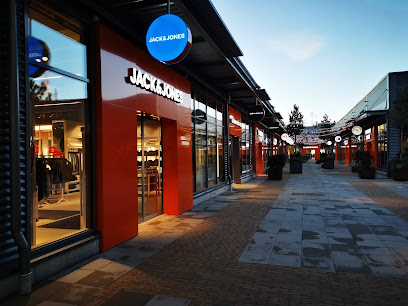
Kämp Galleria
Discover the luxurious Kämp Galleria in Helsinki: a shopping haven with fine dining and cultural experiences at every turn.
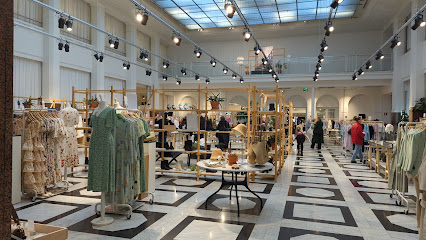
Liikekeskus Ogeli
Discover the heart of Helsinki shopping at Liikekeskus Ogeli, where retail, dining, and entertainment come together in a vibrant atmosphere.
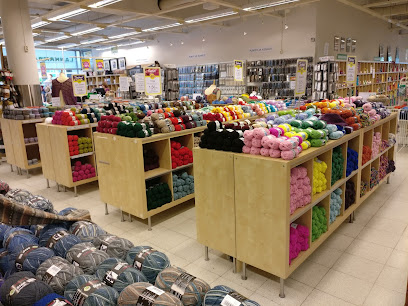
Moomin Shop Lasipalatsi
Explore the whimsical Moomin Shop Lasipalatsi in Helsinki for a charming selection of gifts, books, clothing, and toys celebrating Tove Jansson's beloved characters.
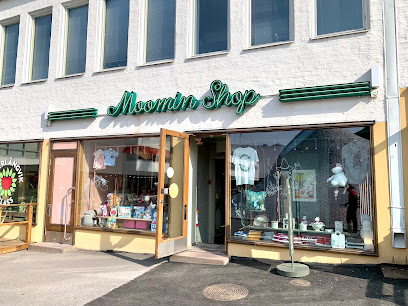
Iittala & Arabia Store Esplanadi
Explore exquisite Finnish design at Iittala & Arabia Store Esplanadi, where craftsmanship meets contemporary elegance in glassware and home goods.
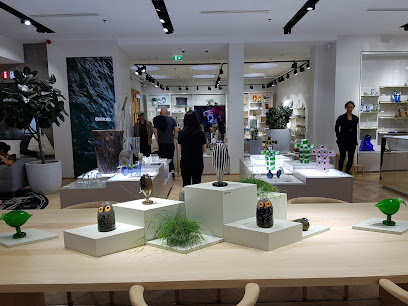
Garageland
Discover Garageland, Helsinki's trendy clothing store offering a unique blend of local and international fashion for every style.
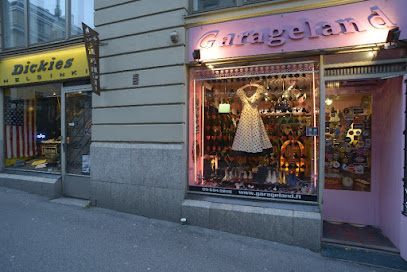
Kankurin Tupa
Explore Kankurin Tupa in Helsinki for unique gifts and home goods that capture Finnish culture and craftsmanship.
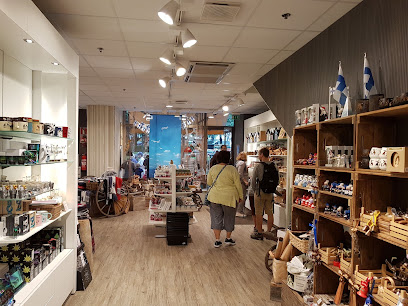
& Other Stories
Discover the chic elegance of & Other Stories, a premier women's clothing and accessories store in the heart of Helsinki, showcasing Scandinavian style.
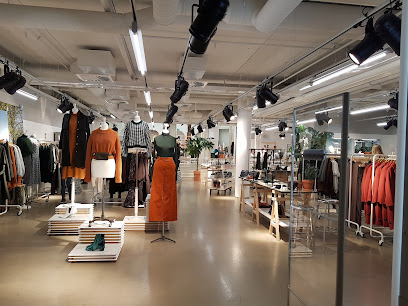
Heureka Shop
Explore Heureka Shop in Helsinki for a unique collection of Finnish-inspired novelties, quirky gifts, and innovative gadgets that make perfect souvenirs.
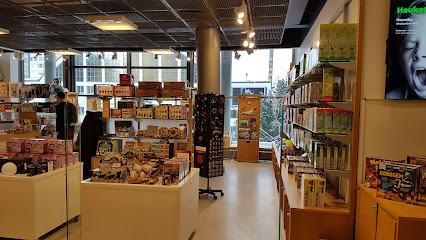
Makia Flagship Store Helsinki
Explore Finnish fashion at the Makia Flagship Store in Helsinki, where modern design meets local craftsmanship in a stylish setting.
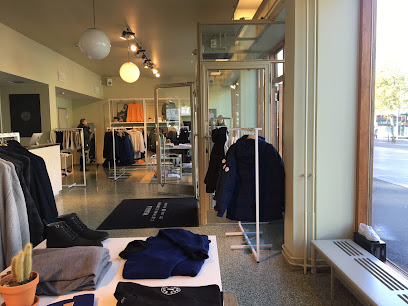
Essential bars & hidden hideouts
The Riff
Discover The Riff in Helsinki, a vibrant bar offering live music, an extensive drink menu, and an inviting atmosphere perfect for memorable nights out.
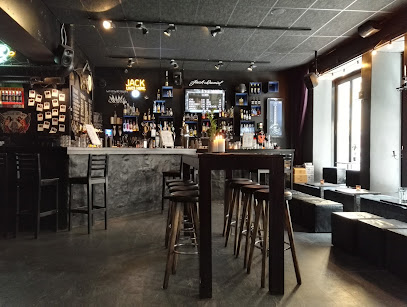
Pub Ikkuna
Experience the heart of Helsinki's nightlife at Pub Ikkuna, where local brews and traditional Finnish cuisine meet a friendly atmosphere.
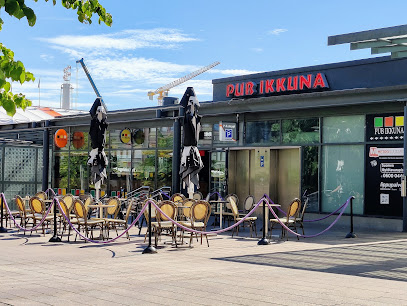
Bar Loose
Bar Loose: A lively bar and music venue in Helsinki offering great food, drinks, and unforgettable live performances.

Beer Restaurant Villi Wäinö
Discover the lively spirit of Finnish nightlife at Beer Restaurant Villi Wäinö, where local brews meet vibrant entertainment in the heart of Helsinki.
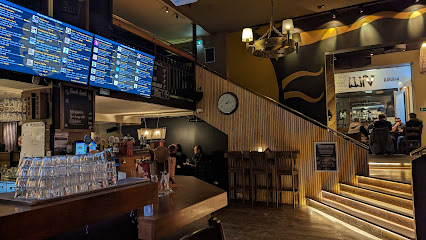
Ateljee Bar
Experience the best of Helsinki nightlife at Ateljee Bar, offering stunning skyline views and a diverse drink menu in an elegant setting.
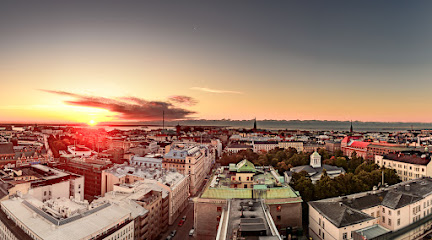
Liberty or Death
Experience the innovative cocktails and vibrant atmosphere at Liberty or Death, Helsinki's top cocktail bar for an unforgettable night out.
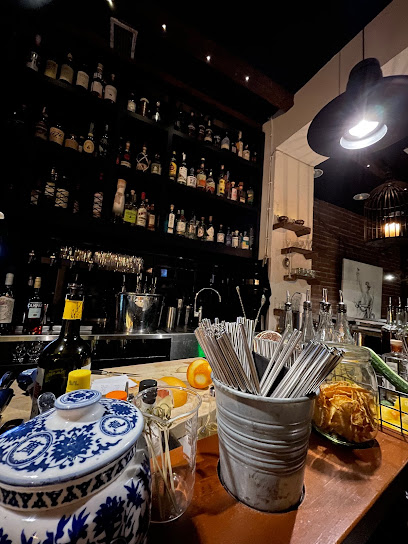
Base Bar
Discover the eclectic charm and vibrant atmosphere of Base Bar, a must-visit nightlife destination in the heart of Helsinki.
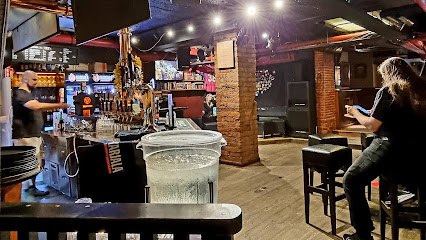
Tommyknocker Craft Beer Bar
Discover the heart of Helsinki's craft beer scene at Tommyknocker Craft Beer Bar, where quality brews and a cozy atmosphere welcome you.

Bar Molotow
Experience the lively atmosphere at Bar Molotow, Helsinki’s vibrant bar blending music, drinks, and delicious bites in an unforgettable night out.

Holiday Bar
Discover the lively spirit of Holiday Bar in Helsinki, where delicious cuisine meets creative cocktails in a stunning waterfront setting.
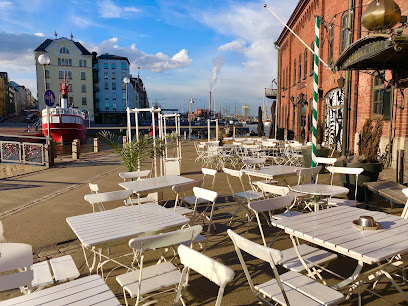
Shot Bar Helsinki
Discover Shot Bar Helsinki - a vibrant nightlife destination offering a diverse range of shots and cocktails in the heart of the city.
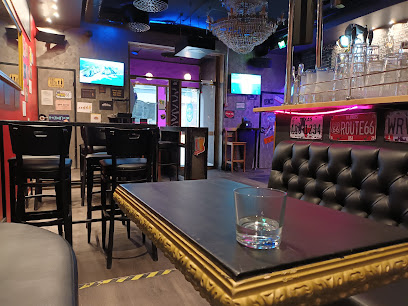
Pub Sirdie
Discover the heart of Finnish culture at Pub Sirdie, a cozy bar in Helsinki offering local beers and traditional cuisine.
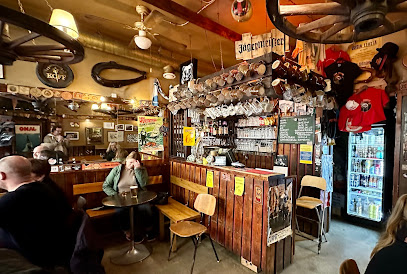
Bar Llamas
Experience the lively nightlife of Helsinki at Bar Llamas - a perfect blend of cocktails, local beers, and vibrant atmosphere.
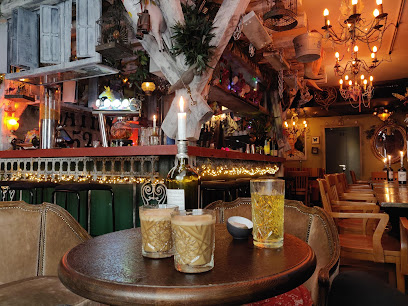
Musta Kissa Bar
Discover the vibrant nightlife at Musta Kissa Bar in Helsinki, featuring live music, great drinks, and an inviting atmosphere for a perfect evening out.
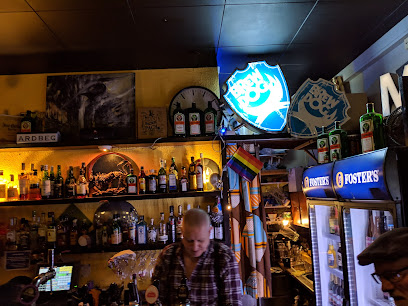
Goldfish Bar
Discover the lively atmosphere of Goldfish Bar in Helsinki, where creative cocktails and vibrant nightlife meet in a cozy setting.
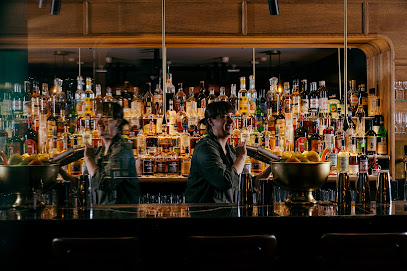
Local Phrases about Helsinki Archipelago
-
- HelloMoi
[moy] - GoodbyeNäkemiin
[nah-keh-meen] - YesKyllä
[kuu-laa] - NoEi
[ay] - Please/You're welcomeOle hyvä
[oh-leh hy-vah] - Thank youKiitos
[kee-tohs] - Excuse me/SorryAnteeksi
[ahn-teh-ehk-see] - How are you?Mitä kuuluu?
[mee-ta koo-loo] - Fine. And you?Hyvää. Entä sinä?
[hoovaa. en-taa see-naa] - Do you speak English?Puhutko englantia?
[poo-hoot-koh eng-lan-tee-ah] - I don't understandEn ymmärrä
[en um-ma-ra]
- HelloMoi
-
- I'd like to see the menu, pleaseSaisinko ruokalistan, kiitos
[sai-sin-ko ruo-ka-lis-tan, kee-tohs] - I don't eat meatEn syö lihaa
[en sue lee-haa] - Cheers!Kippis!
[kip-pis] - I would like to pay, pleaseHaluan maksaa, kiitos
[ha-lu-an mak-saa, kee-tohs]
- I'd like to see the menu, pleaseSaisinko ruokalistan, kiitos
-
- Help!Apua!
[ah-pua] - Go away!Mene pois!
[meh-neh pois] - Call the Police!Soita poliisille!
[soi-ta po-lee-see-leh] - Call a doctor!Soita lääkärille!
[soi-ta laa-ka-ree-leh] - I'm lostOlen eksyksissä
[oh-len eks-uk-sees-sa] - I'm illOlen sairas
[oh-len sai-ras]
- Help!Apua!
-
- I'd like to buy...Haluan ostaa...
[ha-lu-an os-taa] - I'm just lookingKatson vain
[kat-son vain] - How much is it?Paljonko se maksaa?
[pal-yon-ko se mak-saa] - That's too expensiveSe on liian kallis
[se on lee-ee-an kal-lis] - Can you lower the price?Voitko laskea hintaa?
[voit-koh las-kaa hin-taa]
- I'd like to buy...Haluan ostaa...
-
- What time is it?Mitä kello on?
[mee-ta kel-lo on] - It's one o'clockKello on yksi
[kel-lo on yk-see] - Half past (10)Puoli (10)
[pwo-li (10)] - MorningAamu
[ah-moo] - AfternoonIltapäivä
[eel-ta-pa-ee-vaa] - EveningIlta
[eel-ta] - YesterdayEilen
[ay-len] - TodayTänään
[ta-naan] - TomorrowHuomenna
[hwo-men-na] - 1Yksi
[yk-see] - 2Kaksi
[kahk-see] - 3Kolme
[kol-meh] - 4Neljä
[nel-ya] - 5Viisi
[vee-see] - 6Kuusi
[koo-see] - 7Seitsemän
[sayt-seh-man] - 8Kahdeksan
[kah-dek-san] - 9Yhdeksän
[uh-dek-san] - 10Kymmenen
[kuum-meh-nen]
- What time is it?Mitä kello on?
-
- Where's a/the...?Missä on...
[mis-sa on] - What's the address?Mikä on osoite?
[mik-ka on oh-soi-teh] - Can you show me (on the map)?Voitko näyttää minulle (kartalla)?
[voit-koh nayt-taa mi-nul-le (kar-tal-la)] - When's the next (bus)?Milloin on seuraava (bussi)?
[mil-loin on seu-raa-va (bus-see)] - A ticket (to ....)Lippu (kohteeseen ...)
[lip-pu (ko-h-teh-seen)]
- Where's a/the...?Missä on...
History of Helsinki Archipelago
-
The Helsinki Archipelago, a breathtaking labyrinth of over 330 islands, began to take shape around 10,000 years ago during the last Ice Age. As glaciers receded, they carved out the intricate geology of the region, leaving behind a unique and picturesque landscape. The rising sea levels and subsequent land uplift continued to mold the archipelago, making it a distinctive feature of Finland's coastal geography.
-
Evidence of human habitation in the Helsinki Archipelago dates back to the Stone Age. Archaeological finds, such as stone tools and pottery shards, suggest that early settlers were attracted to the region's abundant natural resources. These prehistoric communities relied heavily on fishing, hunting, and foraging, establishing a long-standing human connection with the archipelago's rugged environment.
-
During the medieval period, the Helsinki Archipelago played a crucial role in the Baltic Sea trade network. The islands served as strategic waypoints for merchants and seafarers navigating the treacherous waters. The establishment of trading posts and the exchange of goods fostered cultural interactions and economic growth, laying the groundwork for Helsinki's future development.
-
In the 16th century, Finland, including the Helsinki Archipelago, came under Swedish control. Recognizing the strategic importance of the archipelago, the Swedes constructed several fortifications to protect against maritime threats. Notable among these is the Suomenlinna Sea Fortress, a sprawling complex built on a cluster of islands. This UNESCO World Heritage Site remains a testament to the military ingenuity of the era.
-
Following the Finnish War in 1809, the Helsinki Archipelago, along with the rest of Finland, was ceded to the Russian Empire. The Russian period brought significant modernization efforts to the area. Infrastructure improvements, such as lighthouses and navigational aids, enhanced maritime safety. The archipelago also became a popular summer retreat for Russian nobility, further enriching its cultural tapestry.
-
Finland declared independence from Russia in 1917, and the Helsinki Archipelago played a role in the nation's tumultuous early years. During World War II, the islands were strategically significant for both Finnish and Soviet military operations. Coastal artillery batteries and bunkers were established to defend against potential invasions, leaving behind a legacy of wartime relics scattered across the archipelago.
-
In the post-war era, the Helsinki Archipelago experienced a period of rapid development and urbanization. However, efforts to balance progress with conservation have been paramount. Initiatives to protect the natural environment and preserve historical sites have ensured that the archipelago remains a cherished destination for both locals and tourists. The establishment of national parks and nature reserves has safeguarded the region's ecological and cultural heritage.
-
Today, the Helsinki Archipelago is a vibrant blend of history, culture, and natural beauty. It hosts numerous festivals, art exhibits, and outdoor activities that celebrate its rich heritage. From the bustling market squares of Helsinki to the tranquil, uninhabited islands, the archipelago offers a diverse array of experiences. The interplay between past and present is evident in every corner, making it a unique destination for history enthusiasts and nature lovers alike.
Helsinki Archipelago Essentials
-
The Helsinki Archipelago is accessible from Helsinki, the capital city of Finland. The nearest international airport is Helsinki-Vantaa Airport (HEL), which is well-connected to major cities worldwide. From the airport, you can take a taxi, bus, or train to Helsinki city center. Ferries and water buses operate from the city's port to various islands in the archipelago. Additionally, some islands can be reached by car via bridges or causeways.
-
Transportation within the Helsinki Archipelago includes ferries, water buses, and private boat rentals. The public transport system is efficient, with regular ferry services running between the main islands and the mainland. For more flexibility, consider renting a kayak or a small boat. Biking is also a popular option on larger islands, with several rental shops available. Public transportation tickets can be purchased at kiosks, online, or via mobile apps.
-
The official currency of Finland is the Euro (EUR). Credit and debit cards are widely accepted throughout the Helsinki Archipelago, including in small shops, restaurants, and transportation services. It is advisable to carry some cash for smaller purchases or in case of technical issues with card payments. ATMs are available on larger islands and in Helsinki. Contactless payment methods are also commonly used.
-
The Helsinki Archipelago is generally very safe for tourists. However, it is always wise to take standard precautions. Keep an eye on your belongings in crowded places and avoid isolated areas at night. There are no specific high-crime areas targeting tourists, but always be vigilant, especially in busy ferry terminals and popular tourist spots. Emergency services are reliable and accessible.
-
In case of an emergency, dial 112 for immediate assistance. This number connects you to police, fire, and medical services. Familiarize yourself with the locations of the nearest medical facilities and pharmacies on the islands you plan to visit. It is recommended to have travel insurance that covers medical emergencies. Keep a basic first aid kit with you, especially if you are planning outdoor activities like hiking or boating.
-
Fashion: Do dress in layers. The weather can change quickly, so be prepared for both warm and cool conditions. Don't wear overly flashy or impractical clothing. Religion: Do respect local customs and traditions. While Finland is relatively secular, showing respect at religious sites is appreciated. Public Transport: Do be punctual and respectful of other passengers. Don't speak loudly or make excessive noise. Greetings: Do greet people with a friendly 'Hei' (hello) or 'Moi' (hi). Don't be overly familiar with strangers. Eating & Drinking: Do try local delicacies, such as fish dishes and rye bread. Don't waste food; it is considered impolite.
-
To experience the Helsinki Archipelago like a local, visit during the midsummer festivals, a time of significant cultural celebration. Pack a picnic and enjoy it on one of the many scenic islands. Engage with locals; they are often friendly and willing to share tips and stories about the area. Don't miss the opportunity to take a sauna, a quintessential Finnish experience. For the best seafood, visit local restaurants where the catch of the day is served fresh. Lastly, respect nature; the archipelago is known for its pristine environment, so always follow the 'leave no trace' principle.
Nearby Cities to Helsinki Archipelago
-
Things To Do in Espoo
-
Things To Do in Porvoo
-
Things To Do in Tallinn
-
Things To Do in Lahti
-
Things To Do in Rakvere
-
Things To Do in Rapla
-
Things To Do in Paide
-
Things To Do in Turku
-
Things To Do in Haapsalu
-
Things To Do in Jõhvi
-
Things To Do in Tampere
-
Things To Do in Kärdla
-
Things To Do in Pärnu
-
Things To Do in Viljandi
-
Things To Do in Tartu

